Your cart is currently empty!
Qing dynasty show styling–The good, the bad and the ugly (Hair episode)
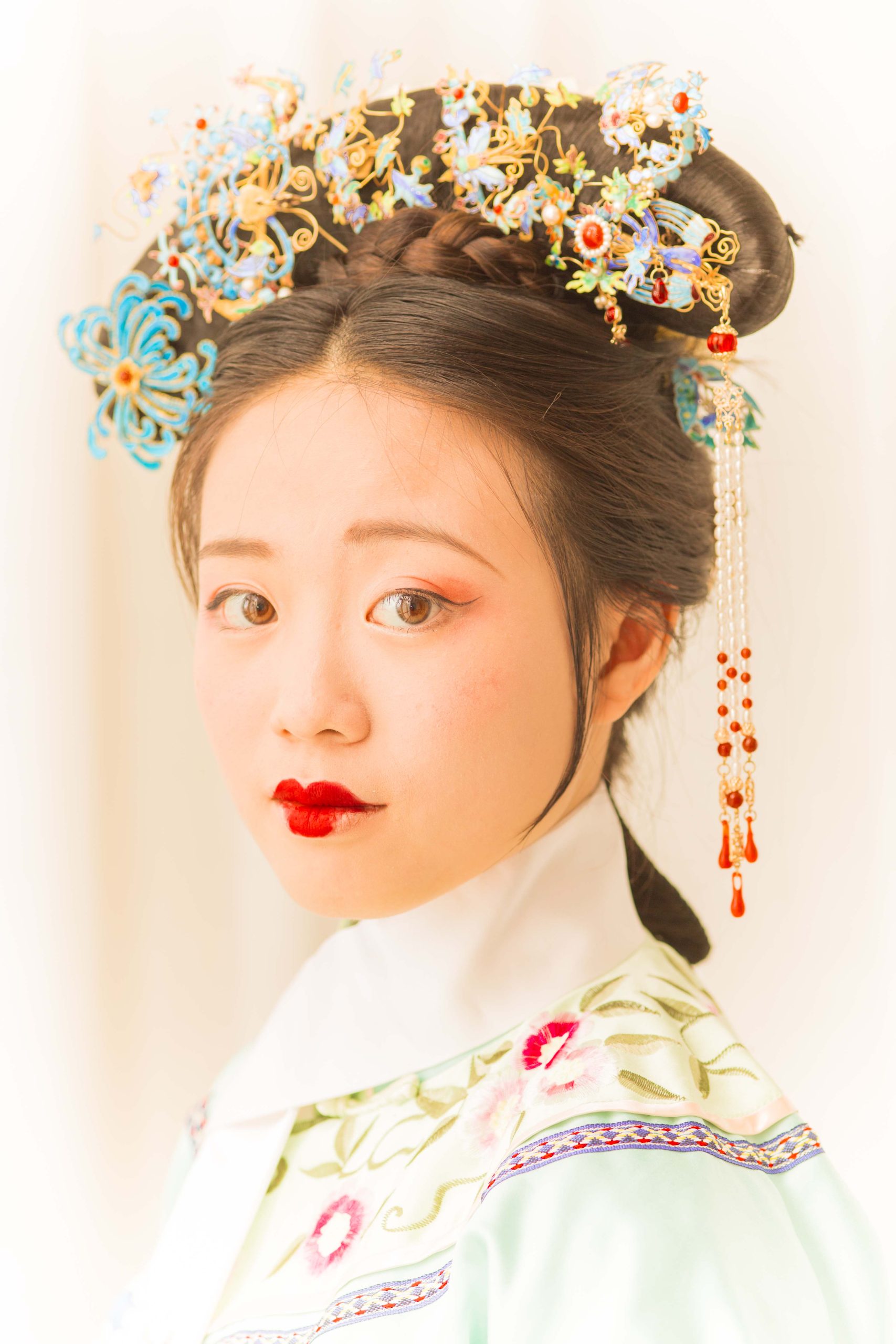
Whenever I meet up with girls who’re interested to join me, their major source of inspiration has often been the 1998 TV series My Fair Princess (还珠格格). It’s been exactly 20 years since its release, and many other Qing dynasty shows have been produced since then with the latest being The Story of Yanxi Palace (延禧攻略), and you could see the slow progression that directors and stylists have made in attempting to be as historically accurate as possible.
Today, I’m going to run through some of the myths perpetuated by Huanzhugege and other Qing dynasty period dramas in terms of Qing dynasty hairstyles and accessories, and where the latest show has gotten it right, where it’s gotten it not so right, and where it’s quite hilarious!
1. THE GOOD: Correcting the hair misconceptions
WOMEN: HUGE HEADDRESS
Below are a quick overview at the big headdresses that every Qing dynasty woman seems to be wearing from in productions between 1998 and 2011
I’ve chosen shows which are all set around the period of Emperor Qianlong (1711-1799) for a fairer comparison, and below is the right evolution of women’s hair from that period onwards.

So you can see, the hair actually got bigger and more exaggerated, with more accessories and tassels later on. the huge flower in the middle, too, was very much towards the end of the Qing dynasty rule in the 1900s. I suppose this is natural as wealth accumulates, the imperial families got more access to resources and were able to indulge more.
And if you go EVEN way back to when the Manchurians FIRST ruled the whole of China about 1600s, women’s hair actually looked like this:
So if you look at the evolution chart, The story of Yanxi looks the most authentic–nobody had that insanely huge hair which clearly belonged to the late Qing dynasty.
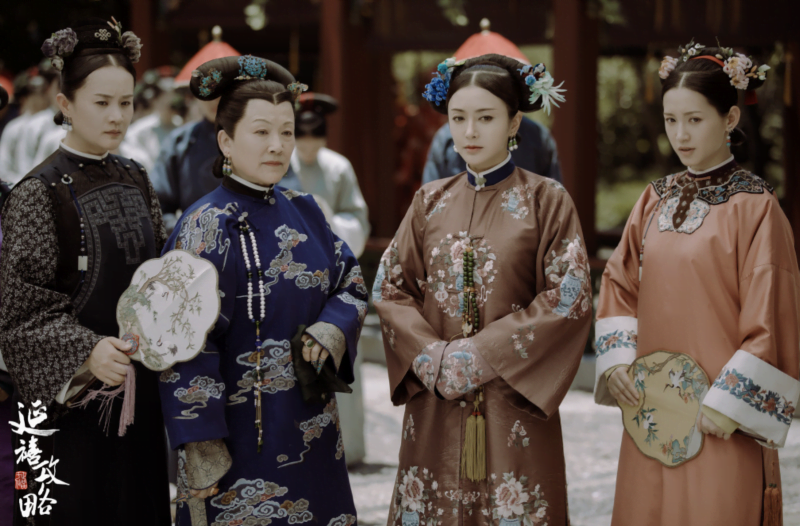
Below is a comparison between the hairstyle in a painting in the early 19th century, and the photograph of the last Empress–Empress Wan Rong in the early 20th century. Clearly, the size of the headpiece/hairpiece increased exponentially within one century.
As the number of artefacts of Manchurian women in their casual wear is extremely rare, it is thus inevitable that the stylist and director of the Yanxi show used paintings in the 19th century as references even though the show was supposed to be about a hundred years before that.
In reality, it might most likely be somewhere between the portrait of Empress Dowager Xiao Zhuang, and the one above. Possibly a fancier braided bun on the top of one’s head which eventually slowly developed into a horizontal, longer headpiece like this:
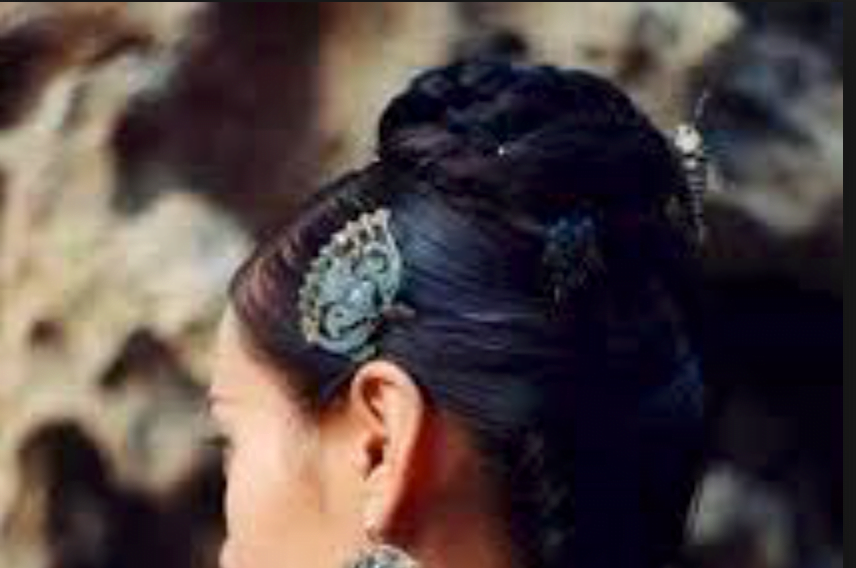
Apparently, the more authentic one is coming up in the show, but more of a rare occurrence than a norm:
MEN: HALF-SHAVEN HEAD
In almost every show, the men always had half-shaven head, which is similar to how late Qing dynasty men had their hair done. And in the Yanxi show, it’s a much smaller bunch of hair at the back of the head:
BUT according to a Japanese record in the 18th century, the following would’ve been accurate:
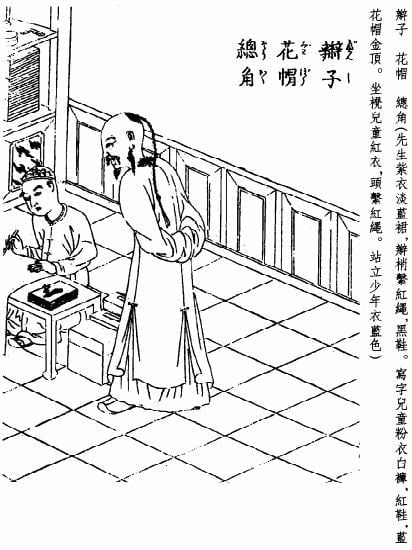
Apparently, at the start, the golden standard was to try to run the braid through the centre of a coin–if it was tiny enough to go through the coin, then it would’ve been a good braid.
Of course, understand that complete recreation would’ve caused an uproar in viewers since it isn’t what most are used to these days. Still a good effort on the part of the stylist/director!
2. THE BAD: Perpetuating the myth of the sparrow-tail-like back
OK, I made the same mistake as everyone thanks to TV from past till present, when it comes to having a sparrow tail-like hairstyle sticking out at the back of the head for Qing dynasty hairdo:
When I spoke to some people who’ve been researching this for a while, I was told that this kind of sparrowtail hairdo was more for the Han Chinese women during the Qing dynasty. And with a bit of research, it does seem true that it was not really until the late Qing that Manchurians started sporting something remotely close to this:
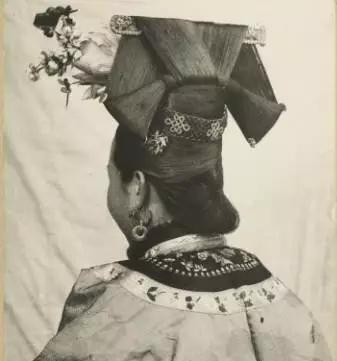
It doesn’t seem quite like the sparrow-tail in the shows, and seem more like sagging hair at the back. To make sure that it is a legit observation, I went to find out many other pictures of Manchurian vs Han Chinese women’s pictures in the early late 19th century/early 20th century and we can safely say that if you have a large headpiece on top of your hair, the manchurians don’t have a sparrowtail-like back. IF they ever have a sparrowtail-like back, which was more of a Han Chinese hairstyle, then they don’t mix it with the headdress.
As illustrated below:

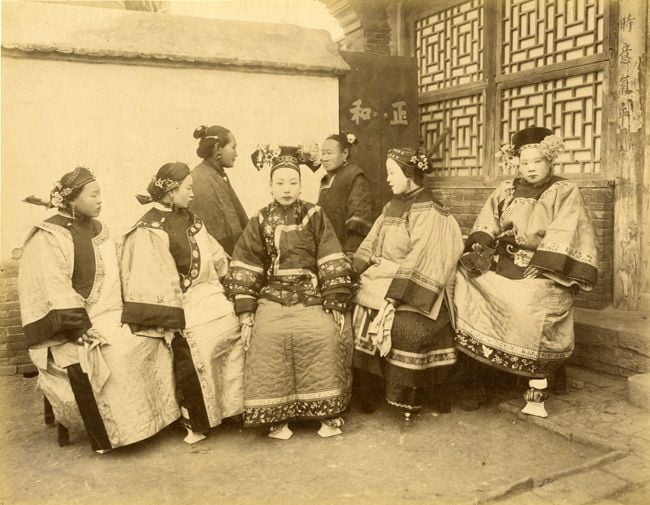
How do I know if they’re Manchurian or Han Chinese in the pictures? Easiest way is to look at their feet–if they have tiny feet like a triangular hoof, then that’s Han Chinese, if they have platform shoes then it’s Manchurian. Manchurian women were forbidden by the orders of the emperor to bind their feet like the Han Chinese, as he saw it as corrupting the Manchurian spirit and values. Although, some did still try to.
Cos, vanity.
3. THE UGLY: The weird random hairstyles in the Yanxi show, and how they’ve been randomly used
That odd sideburn and high bun hairstyle, not to mention smoky eyes 90s look
We’ll come to her pearl bead shawl/cloud shoulder-like thing in another article. But there’s probably nothing more jarring in this entire show than this hairstyle. The fringe (with sideburn included) was something that’s so 20th century China, and a braided sideburn, well, I guess has gotta be a 21st-century imagination!
That lunatic-looking attempt to cosplay an ancient mythological goddess.
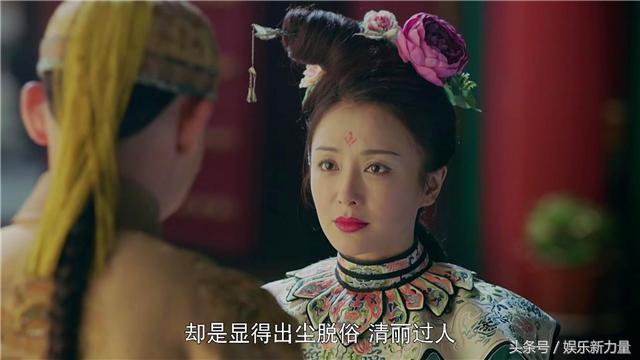
She was supposed to look like the nymph/goddess of the Luo River, and the most famous painting depicting that mythology is none other than the one below (part of the painting is as shown). The painting was said to be a replica based one by Gu Kaizhi, a painter from about 2000 years ago in the Weijin era. It was a similar look that I tried to recreate when I did my Weijin era shoot last year. I have no idea what inspired the look above… It’s got a bit of everything that one would associate with beauty–dangling accessory which represented daintiness, flowers which represent great beauty, beauty mark on forehead but… that cocoon looking hair… I have no words….
Coincidentally, I actually did a quick write-up about the painter Gu Kaizhi earlier last year. Feel free to have a quick read about the first painter who left his name in history of Chinese art!
BONUS
In case you’re wondering the inspiration for the really huge hair of the Momo (lead lady-in-waiting), I believe the picture below on the right was the inspiration. It was a non-Manchurian Chinese hairstyle in southern China sometime in the 20th Century. Rather strange that it would be allowed in the Palace though… But I think the stylist/director probably wanted to showcase certain diversity and introduce certain unusual styles of the Qing dynasty. Which I think is great, cos now people can find out a bit more about them!
That’s all for the hair episode so far. Will move on to dresses when I have the chance!
5 responses to “Qing dynasty show styling–The good, the bad and the ugly (Hair episode)”

Thank you for sharing!!! Qing dynasty hair has always fascinated me ever since HZGG. I spent a ridiculous amount of time to trying to understand what the different hair styles meant in HZGG. (Eg princesses seemed to have 2 of the red dangling things, servants had one. The empress and empress dowager had yellow dangling things so that means high status? And then in HZGG 3, Qing Er suddenly had her 2 red dangling things in the same side!!! What did it all mean?!?! Was it cos Qing Er isn’t the emperor’s daughter but is still of royal blood?! Dear lord, the questions!)
Back then no Internet so even harder to find answers. But even now I also struggle to find information. Maybe I’m just over thinking is but I always thought the Qing women’s hairstyles meant something. Like married women wore their hair up and unmarried women didn’t. (Right?!?!)
BTW Loving the story of yanxi palace. While the costumes are not as extravagant as Zhen Huan Zhuan but they really grow on you! Please share more!! 😀

I would actually argue that the show’s dresses are definitely a lot more elaborate in terms of the craftsmanship and authenticity than zhenhuan or anyone before that! But will go into it later when I have time for another piece! Stay tuned!

I’m new to Qing Dynasty dramas, so these posts of yours had been very helpful. Thanks a lot for that. I’ve been watching Ruyi clips on YouTube, and does this mean they too got the elaborate hair wrong just like their predecessors? How and why would they do such a mistake? It probably costed more money to get hair up like that and then decorate them with all the pins!

Actually i think i spotted the huge hair of momo in a painting haha.
https://commons.wikimedia.org/w/index.php?curid=15139859
That’s a fur hat with brocade details. Many normadic tribes have such hats.

Leave a Reply